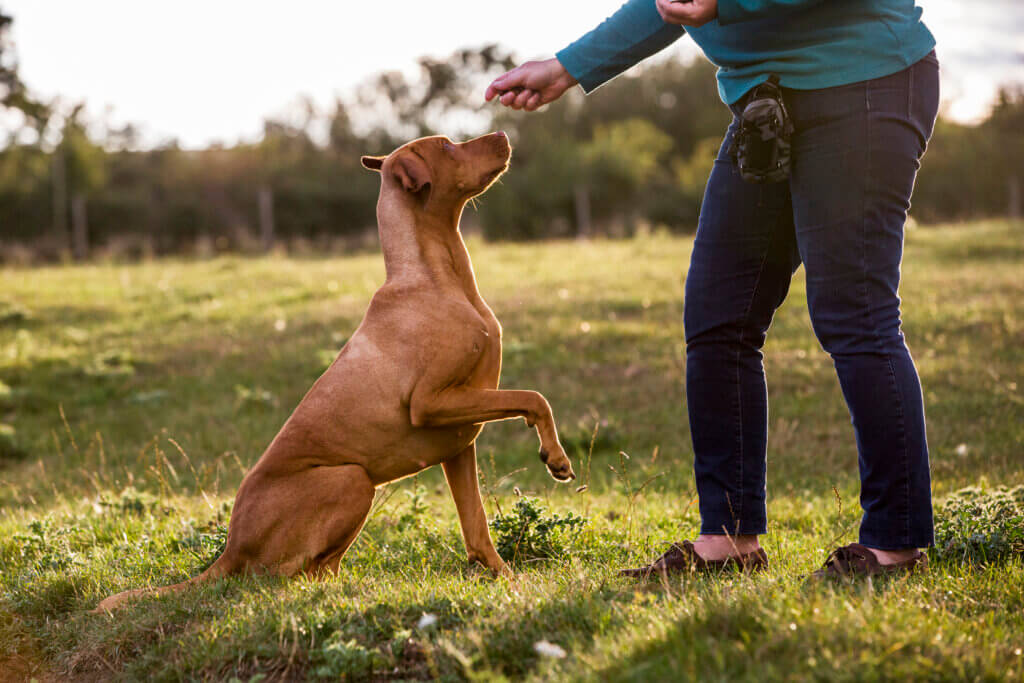If you’re thinking about dog training for dogs with anxiety, there are some important things to consider. You’ll need to understand that there are several factors that affect your dog’s anxiety levels. Fortunately, there are some methods to help your dog to cope with these issues.
Changes in the environment can affect dog training
In order to help your dog become more anxiety-free, it is important to know what environmental factors affect your pet’s behavior. Changes in your home environment can make it harder for your dog to deal with anxiety.
Dogs can be particularly vulnerable to changes in their physical and social environments. Among other things, this means that they may become fearful when other animals die or leave the house. Similarly, dogs may become anxious when their schedules change. Keeping your home environment as stress-free as possible is essential to the wellbeing of your dog.
Environmental factors have also been shown to be a factor in the development of anxiety-related personality disorders. These behaviors include separation anxiety, destructive behaviors such as inappropriate elimination, and excessive barking. Fortunately, there are ways to minimize the effects of these behaviors.
Desensitization
Desensitization in dog training is used to manage your dog’s emotional responses. If you have a dog with separation anxiety, then you may want to consider this method as a way to help you get over your pet’s fears.
It is a good idea to start with the mildest of triggers. This includes familiar people, places, and items. You should also include canine body language cues. When you see your dog responding to a certain trigger, you can reward it with a treat.
A good idea is to keep a detailed journal of your progress. Note the intensity of the trigger, how long you are in its presence, and how your dog responds.
Desensitization in dog training should be a gradual process. As you go along, your dog will likely slow down and show signs of stress.
TTouch and SOFT exercises
TTouch and SOFT exercises for dog training can be useful in improving your pet’s anxiety and overall health. They can help reduce stress and increase your dog’s awareness of its surroundings. You can try some of these exercises at home or in a training facility.
TTouch and SOFT exercises for dogs have to be done in moderation and in conjunction with other techniques. If your pet is particularly nervous, it may be worthwhile to try medication. This will help ease your pet’s discomfort and allow it to focus on its tasks.
The first step in the SOFT exercise is to have your dog lay on its side. Place one of your hands on the dog’s head and the other on the top of its ear. Move your thumb around the outside of the ear in a clockwise circular motion. Eventually your dog will assume a relaxed position on command.
SSRIs and antidepressants
A number of dogs are prescribed antidepressants and SSRIs to treat anxiety. However, before a dog is put on medication, it is important to understand how these drugs work. Some SSRIs can cause sedation and other side effects.
Antidepressants are drugs that work by boosting the brain’s serotonin levels. Serotonin is a chemical that helps regulate mood and contributes to feelings of happiness.
Using antidepressants for dogs is safe if a veterinarian prescribes them, but they may have unexpected consequences. For example, dogs on Prozac might experience serotonin syndrome, a potentially life-threatening condition. The risk increases when more than one type of antidepressant is used.
Several medications are approved for use on dogs, but others are used off-label. Off-label use means that the drug was not approved by the FDA for use on animals.
Service dogs
Training service dogs for anxiety requires some finesse. There are several training methods to choose from, and each one varies in cost and difficulty.
The best known method is to attend a program that provides fully trained service dogs. These dogs can help you with everything from getting in and out of bed to alerting other people in an emergency. They may even improve your heart health.
For most owners, however, completing the socialization process on their own will do. Some may decide to hire a professional trainer to ensure the dog’s obedience is up to snuff.
A well-trained emotional support dog can reduce triglyceride levels and cholesterol. However, they do not have the same legal protections as a service dog. Nonetheless, they are still considered pets.









































